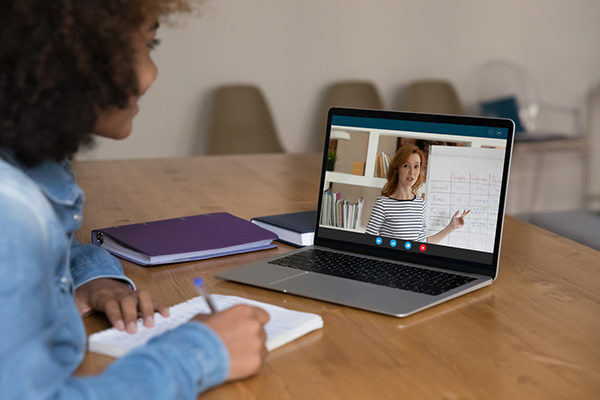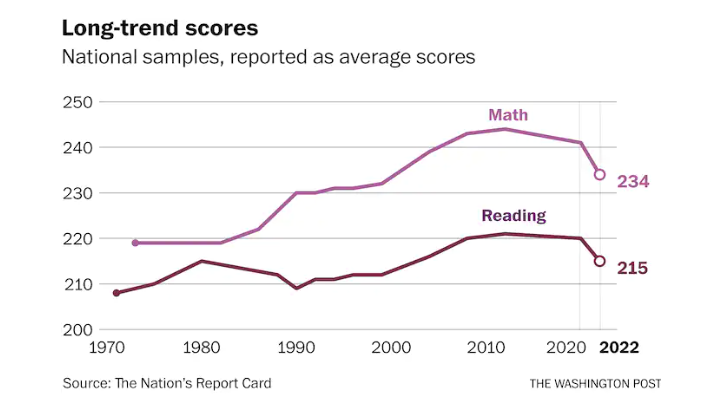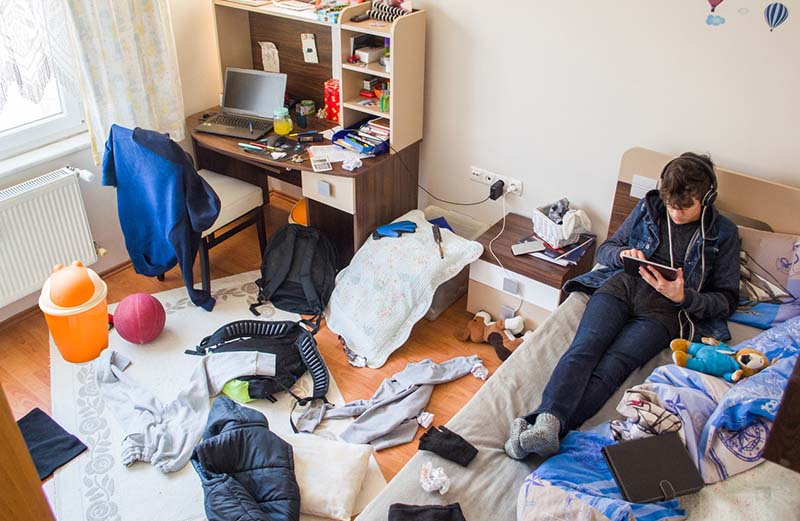
by TutorUp | Oct 13, 2022 | Online Tutoring
How to Choose the Right Tutor
Parents have a lot of options when it comes to choosing a tutor for their child. When a child is struggling in school, chances are that they are also feeling anxious about it. It can be a hit to their self-confidence, their self-esteem, and can make them the target of bullying. And then the problem isn’t simply that they need help getting caught up to their peers in a certain subject; instead, it becomes a bigger problem.
This is exactly why choosing a tutor is more than just finding someone who is a subject matter expert and who knows more about what your child is struggling with than they do. It is equally as important for your tutor to understand the bigger picture and be able to relate to your child in a positive way that will help them gain confidence and learn skills that will stay with them.
The Top 4 Most Important Qualities of an Effective Tutor
- Knowledge: Must be a subject matter expert
- Skill: Must have experience teaching and tutoring
- Empathy: Must be able to see and work with a student as a whole person
- Flexibility: Must be able to personalize and adapt tutoring for each individual child’s needs
These are not the only qualities that define an effective tutor, but they are the must-haves. It’s also very important to be a good listener and to respect the concerns and fears the student may have. There is also a need to be able to maintain discipline without being an authoritarian. Kids are going to have times where they would rather goof off than have a tutoring session, and an effective tutor needs to know if they should steer them back to work or reschedule for another time.
Successful Tutoring is a Partnership
There are four partners in every successful tutoring relationship:
Student: It’s more difficult to make progress with a reluctant student than with a student who sees tutoring as being helpful and supportive. Fostering a positive attitude towards tutoring is key to its success.
Parents: Parents are busy. They may have jobs and other children and responsibilities, so the tendency is to find a tutor and leave it up to the tutor and student to work things out. Checking in with the tutor regularly is important to the child’s success. And helping the child prepare for and then review each tutoring session is a great way to stay involved and know what your child is learning.
Teachers: When classroom teachers are aware of and involved in their student’s tutoring, chances are it will be more effective. Teachers can provide the syllabus to the tutor, and communicate what they see as the student’s strengths and weaknesses. This helps the tutor know what to focus on.
Tutor: The best tutors know that communication is critical. Working with parents and with classroom teachers will help them to be more successful in their tutoring efforts. It’s also important for tutors to connect with other tutors and to stay on top of professional development opportunities.
Personal Preferences
Your child may respond better to a female tutor or a male tutor. Some children need a firmer hand while others need an empathetic, supportive tutor. If language differences are a factor, matching a student with a tutor who can speak their language and who sounds like them may be important. They key is to choose the tutor you think your child will be able to connect with and learn from most effectively. If, after a few sessions, you or your child don’t feel that connection is working, by all means switch to a different tutor.
TutorUp Tutors
In keeping with the Top 4 Most Important Qualities of an Effective Tutor, all TutorUp tutors are:
- Certified teachers in the subject(s) they are tutoring
- Experienced classroom teachers with tutoring experience
- Skilled at working with students who are struggling and have all different levels of achievement
- Able to work effectively face-to-face and one-on-one in the online tutoring environment, personalizing each session for that student
For help getting matched with the right tutor, fill out the form below, or give us a call at 877-TutorUp (877-888-6787)

by TutorUp | Sep 26, 2022 | Online Tutoring
How Frequent Tutoring Makes a Difference
Sometimes referred to as high-intensity tutoring, or high-dosage tutoring, high-impact tutoring is defined as one-on-one (or sometimes small group) tutoring at least three times a week for an extended period of time, like a semester or an entire school year.
A recent study published by Brown University, The Impressive Effects of Tutoring on PreK-12 Learning: A Systematic Review and Meta-Analysis of the Experimental Evidence, evaluated the effectiveness of PreK-12 tutoring by looking at data from dozens of experiments and studies. The paper they published on their study can be found here, but these are some of their conclusions, “We find that tutoring programs yield consistent and substantial positive impacts on learning outcomes, with an overall pooled effect size estimate of 0.37 standard deviation. Effects are stronger, on average, for teacher and paraprofessional tutoring programs than for nonprofessional and parent tutoring. Effects also tend to be strongest among the earlier grades. While overall effects for reading and math interventions are similar, reading tutoring tends to yield higher effect sizes in earlier grades, while math tutoring tends to yield higher effect sizes in later grades. Tutoring programs conducted during school tend to have larger impacts than those conducted after school.” They clarified that the “after school” tutoring they refer to here is with parents and non-professionals, which is why it was considered to not have as large of an impact.
The Goal of Tutoring
The overall goal of tutoring is to provide the personalized support that each student needs. For some, this will be remedial help with subjects in which a child needs to get caught up with their peers. In other cases, tutoring can provide supplemental practice in subjects that help a student maintain progress. And for some students, tutoring can provide enrichment in subjects of interest that they cannot get in class at school. The best way to provide support in each of these models is by giving each student the one-on-one attention and instruction that they can’t get in a classroom scenario with dozens of other students vying for the teacher’s attention. And, as the studies have shown, professional highly-qualified tutors provide the best results.
Different Tutoring Formats
On-site tutoring is generally in small groups, at brick and mortar learning centers, often specializing in one subject area, like math. Students enroll in these sessions and usually follow a curriculum and lesson plans created by the vendor.
Online homework help is available from a number of resources, and is helpful for the student who has a quick question or two or is stuck on a specific issue that they need one-time help with. These services are often staffed by other students.
Self-paced online resources aren’t actually considered tutoring, but are available as enrichment and don’t usually include any contact with a tutor.
In-school tutoring is offered in many schools, and may be one-on-one or small groups, with sessions taking place during the school day, or before or after school.
In-person, one-on-one tutoring is often conducted in the student’s home, the tutor’s home, or in a public place like a library or coffee shop. This type of tutoring can include homework help, or specific remedial support in a given subject area.
Online, one-on-one tutoring is very much like the in-person version, but takes place over an internet video chat platform like Zoom or Google Meet. The online format makes scheduling much more convenient for both the tutor and the student and still provides the individual, personalized support and attention the student needs.
Key Elements of High-Impact Tutoring
According to the Texas Education Agency, high-impact tutoring needs to include these 6 key elements:
- Well-trained, consistent tutor who builds a strong relationship with students. Research indicates that teachers, paraprofessionals, college students, and other types of tutors can all be effective when tutoring one-to-one or in small groups.
- High-quality instructional material aligned to standards and core classwork, focusing on addressing missed concepts and skills
- One-to-one or small group (three or four students) for individualized support
- Embedded in the school day or just before or after, to maximize student access
- At least three sessions per week, 30 minutes minimum
- Data-driven with tutors building and delivering sessions around student strengths and needs
High-Impact Tutoring with TutorUp
All of our tutors are certified, experienced classroom teachers who build their tutoring sessions around the specific needs of each student. All of our sessions are online, one-on-one so the student gets the tutor’s undivided attention. Session length and frequency are completely flexible and can be customized for each tutor’s/student’s convenience. For more information, or to talk with a tutoring consultant, fill out the form below or call 877-TutorUp (877-888-6787).

by TutorUp | Sep 2, 2022 | Parent and Tutor Resources
Report shows the serious impact of the pandemic
The just-released report from the National Assessment of Educational Progress (NAEP) has been making waves in mainstream media and across the nation. Based on test results of 9-year-old fourth graders that were given from January to March in 2020 and in 2022, the test scores were alarming. Math scores dropped seven points, which is the first ever decline, and reading scores dropped five points, which is the largest drop in 30 years.
“These results are sobering,” said Peggy G. Carr, commissioner of the National Center for Education Statistics, which administers the tests. “It’s clear that covid-19 shocked American education and stunted the academic growth of this age group.”
As reported in The Washington Post by Donna St. George, this historic falloff “left little doubt about the pandemic’s toll. The average math score of 234 this year was comparable to the average score recorded in 1999, and the reading score of 215 was similar to the 2004 score. How long it might take to catch up is unclear and not likely to be understood until further test results are analyzed.”
According to other studies, there has also been an increase in classroom disruption, school violence, absenteeism, cyberbullying, teacher and staff vacancies, and an increase in students seeking mental health services.
“While we see declines at all performance levels, the growing gap between students at the top and those at the bottom is an important but overlooked trend,” said Martin West, a member of the governing board that sets policy for NAEP and academic dean at Harvard Graduate School of Education, in a statement. “These results show that this gap widened further during the pandemic.”
“Supporting the academic recovery of lower-performing students should be a top priority for educators and policymakers nationwide,” West said.
St. George reports that “seventy percent of the 9-year-olds tested this year recalled learning remotely at some point during the pandemic. More than 80 percent of higher-performing students reported always having access to a laptop, a desktop computer or a tablet. Among lower-performing students, about 60 percent had constant access.”
The NAEP testing is done at public and private schools chosen randomly from across the country. This year’s testing included 14,800 students from 410 schools. There are three 15-minute blocks of questions, mostly multiple-choice, plus a questionnaire.
Frequent, regular tutoring a proven strategy to help
Education Secretary Miguel Cardona stated that the NAEP results cast the experiences of the last two years in “a stark light” but should remind people to press ahead with efforts to accelerate student learning, support student mental health needs and invest in educators. States should steer federal relief funds “even more effectively and expeditiously” to proven strategies including “high-dosage” tutoring and after-school and summer programs, Cardona said.
NAEP tests are a congressionally authorized project, sponsored by the Department of Education and administered through its statistical arm, the NCES.
Read St. George’s full reporting on this at The Washington Post, here.

by TutorUp | Aug 23, 2022 | Parents and Home
Get Organized, Do Better
No, this isn’t a pitch for hiring tutors. It’s not a list of recommended study aids. Or books, tapes, videos, or other programs you can buy that will help your child in school. One of the simplest ways you can give your child a boost that will help him or her in school as well as for the rest of their lives is to give them the gift of organization.
That’s it. You can do those other things as well, but they won’t work or be as effective if your child’s desk, backpack, bedroom, home, and life are a disorganized mess. Because chances are that if your child’s environment is chaotic, so is their brain.
Where to Start
Start small. Does your child’s backpack for school have pockets, dividers, pouches, etc. or is it just one big open bag they throw everything into? Get color-coded folders and pouches and other containers that fit inside the backpack to help them keep things sorted. Have one folder that is just for papers they’re supposed to bring home for you to see and/or sign. Have a folder for each subject so they can easily sort their work, whether it’s completed assignments or works in progress. Of course they need other supplies; pens, pencils, erasers, sharpener, highlighter, calculator, compass, ruler, etc. Whatever your student needs to carry from classroom to classroom or from school to home, help them get it organized and work with them to keep it that way.
If your child’s assignments, classroom work, notes from the teacher, etc. are online, then take a few minutes every day to go over those things together.
Most kids can effectively use a daily planner by 4th or 5th grade. And even though today everything is online, electronic, and virtual, teach your child how to write down assignments, due dates, reminders, etc. It’s actually handier than having to look it up, plus the act of writing things down helps sear it into memory.
Being Organized as a Lifestyle
There’s a certain amount of casual clutter or disorganization that just happens in the daily flow of life’s activities, and that’s understandable. But studies have shown that living amongst clutter is stressful, and can cause anxiety and impair the ability to concentrate. Once the backpack or bookbag is sorted, work with your child to get their closet, dresser, desk, bedroom, toys, sports equipment, and other belongings sorted and organized, and teach them how to keep up with it so it’s not a huge chore once a month, but a daily habit that only takes a few minutes. This will help contribute to their inner calm, which in turn helps them focus and concentrate.
Unbusy Their Schedule
Families are on the go. In addition to school for them and work for you, there’s meals, shopping, errands, sports, extracurricular activities, church or worship, social activities, pets to care for, and the list goes on. It’s up to you to take a step back and look at your own family’s dynamics and see if there are ways you can fit in blocks of down time for your child. If there is more than one adult in the family, can one of you do some of the errands while the other stays home, giving the kids a break from being on the go? Will meal prep once a week be a viable timesaver for you that can lessen the daily burden? Will prepared meal delivery services fit into the budget so meals are super easy?
Look for ways to clear some time every day that is unstructured and unscheduled. It will help your child and also help you.
Unplug the Electronics
Kids spend too much time online, plugged in, overstimulated. Apparently the average kid between 8 and 18 spends six to seven hours a day in front of a screen. For their sanity, safety, and success, put limits on screen time. Build a library of actual books, magazines, journals, comic books, travel guides, cookbooks, catalogs, hobby books, etc. And help them get up off the couch and do something active every day. Weather permitting, spending some time outdoors each day is ideal. Walk the dog, water the flowers, pick weeds, ride a bike, skateboard, go for a walk, but just find something to do that gets your child outside and moving.
These are all things that contribute to your child’s overall mental health, which in turn is going to help them get the most out of school. Making these activities part of their daily routine is going to help your child feel focused, confident and proactive. Turning these activities into habits helps set up your child for a lifetime of success.

by TutorUp | Aug 9, 2022 | Education Topics
What are the school choice trends in 2022-23?
In the United States since 2011, the last week of January each year has been designated School Choice Week to promote the concept of all the different forms of school choice. For this current school year, National School Choice Week will be January 22-28, 2023.
There are six main options for schooling in the United States: traditional public schools, public charter schools, public magnet schools, private schools, online academies, and homeschooling. The National School Choice Week Team has published the trends for 2022-23, recapped here.
Traditional Public Schools and Open Enrollment
Available in all 50 states, traditional public schools are established by school districts. Open enrollment policies mean that parents can choose a public school that is outside of their own zone or district. Currently:
- 13 states allow parents to choose any public school for their child, in any school district
- 18 states allow open enrollment to parents that meet certain requirements, like living too far from the assigned school, or wishing to transfer out of a low-performing school.
- An additional 19 states allow districts and schools to choose whether they will participate in open enrollment. So families must request and receive school district approval to take advantage of open enrollment in these states. Some states are lenient with their requirements while others rarely permit transfers.
Public Charter Schools
Charter schools are created by school districts, colleges, nonprofit organizations or other entities and are generally innovative schools within the public school system. 45 states and the District of Columbia allow public charter schools, and there are currently about 7,700 in the U.S. The number of students in charter schools has more than doubled in the last 10 years.
Magnet Schools
Magnet schools are also public schools operated by school districts, but they allow students to focus on a specific learning track, like STEM, medical science, or performing arts. There are more than 4,000 magnet schools across the US, and there are thousands of magnet programs within traditional public schools nationwide. All 50 states permit magnet schools, theme-based schools, or magnet programs, and 5 states have magnet programs but no freestanding magnet schools at this time.
Private Schools
Private schools are an educational choice in all 50 states and vary widely as to tuition and curriculum. Many private schools and nonprofit organizations offer scholarships to help students pay for tuition. In addition, 30 states offer official programs that provide scholarships or tuition assistance for families choosing private schools.
Online Learning and Course Access
Virtual academies instruct students 100% through online or digital curricula. In the 2019-20 school year, approximately 375,000 K-12 students attended a statewide online school full time in the United States. That number jumped to 656,000 for the 2020-21 school year. The numbers for 2021-22 aren’t in yet.
35 states offer full-time, tuition-free online public schools, established by state authorities, school districts, or charter schools. In many states, students can use online coursework to supplement their in-person schooling. Many states also offer this online course access to private school or homeschooled students.
Homeschooling
All 50 states allow parents to homeschool their children. Many families collaborate with others, using tutorials, cooperatives, and leagues. Enrollment in homeschool programs nearly doubled from 1999 to 2016. By 2020, before the coronavirus pandemic, more than 2 million children were homeschooled. As of 2022, that number has grown to about 3.7 million, and is growing in all race and income categories.
To view maps showing the details of these various school options for each state, please visit SchoolChoiceWeek.com.






